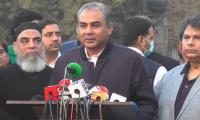Due to Indian revocation of Article 370, the Kashmir issue is being discussed at wide-reaching scale, especially in neighbouring countries and other central world capitals besides international media and human rights organisations. With forcible disappearance of over 20,000 civilians, widespread rape, torture, and extra-judicial killings by Indian security forces, continuous lockdown for 120 days, the issue refuses to die down. In this era of worldwide communications and internet, the ground realities in the Valley are not hidden from the world. Even Indian human rights organisations are getting anxious. Recently, civil society activists from different parts of India called for restoration of democracy and an end to human rights violations in the occupied territory. At a press conference in New Delhi, the activists narrated their recent experiences in Jammu and Kashmir and how their pro-democracy march from Jammu to Srinagar was stopped by Indian security forces. According to Sandeep Pandey, a prominent social activist who is internationally recognised, more than 50 activists started the ‘Restoration of democracy’ march from Jammu to Srinagar on Nov. 26 but police did not allow them to go beyond Jammu and created lots of hurdles in their way.
According to the Indian media, the special forces of Indian army, navy and air force have been deployed in the Kashmir Valley to carry out combined counter-terrorist operations. The three special forces, namely, the Army’s Para (Special Forces), Navy’s Marine Commandos and Indian Air Force’s Garud Special Forces, are being deployed in the Kashmir Valley under the Defence Ministry’s newly-raised Armed Forces Special Operations Division which India claimed was a major step towards enhancing coordination among the three services. This is another failed attempt to show that there was some huge enemy presence in occupied J&K but in essence, it were only the Kashmiris that around one million strong Indian military is facing. Experts in operation of special forces term the announcement of joint forces deployment as funny since the naval and air force troops have no special role in mountainous terrain of Kashmir. Not only it raises doubts about the quality of Indian ground forces to handle the situation in the held Valley that merited reinforcement from other services, it was termed merely a propaganda, an optics gimmick, to show that there was a high level threat in the Valley.
Meanwhile, the lies continue. Indian Home Minister Amit Shah told the Indian parliament on November 20 that “there is no curfew in the valley and the situation in the region is normal.” He claimed in parliament that internet networks would be restored when the local authorities decide to do so, keeping security in mind as “there are activities by Pakistan in Kashmir region.” On November 30, the minister had told a group of businessmen in Mumbai that “the situation in the valley is normal and industrialists should visit the state to see the real situation there.” But human rights activists and local people say the Indian government is trying to fool the world and is not successful in its endeavours. According to an Indian human rights activist, “at least 40,000 people have been detained in what has been announced as preventive measures, and only those get released who get a bond signed by their local community expressing approval of the revocation of Article 370.” So much for the blatant lies.
A general view of Islamabad city can be seen in this picture released on January 5, 2023. —...
People buy fish at the G-9 weekly bazaar in the federal capital as demand rises despite high white meat prices during...
Islamabad Capital Territory Police stand guard on the road of Islamabad. — AFP/FileOver the past decades,...
A group photo from the USAID’s Higher Education System Strengthening Activity's impactful four-day training on...
The picture shows Islamabad police personnel in this undated photo. — AFP/FileIslamabad : The capital city of...
Prof Ayaz Qureshi from University of Edinburgh,UK addressing an event.— Facebook@iubwp/File Islamabad : Prof Ayaz...







